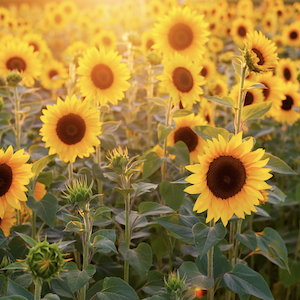Some physio-biochemical traits of sunflower (Helianthus annuus L.) as affected by arbuscular mycorrhizal fungi inoculation under different irrigation treatments

Accepted: 8 August 2022
HTML: 121
All claims expressed in this article are solely those of the authors and do not necessarily represent those of their affiliated organizations, or those of the publisher, the editors and the reviewers. Any product that may be evaluated in this article or claim that may be made by its manufacturer is not guaranteed or endorsed by the publisher.
Plant-arbuscular mycorrhizal (AM) fungi association is one of the oldest symbiotic relationships between organisms. This relationship may be more important under stress conditions such as drought and can help the host plant tolerate drought. This study was conducted in 2016 and 2017 at the Agricultural Research Farm of Razi University, Kermanshah, Iran to evaluate the effect of AM fungi (AMF) inoculation (with either Funneliformis mosseae or Rhizophagus intraradices) on some physio-biochemical traits of three sunflower cultivars under different soil irrigation treatments (severe water deficit stress, mild water deficit stress and well-watered). In both years, water deficit conditions significantly reduced leaf relative water content (RWC), chlorophyll concentrations (a, b and total) and shoot phosphorus concentration (SPC) while simultaneously increasing shoot proline levels and malondialdehyde (MDA) concentrations. AMF inoculation had positive effects on RWC, chlorophyll concentrations and SPC irrespective of sunflower cultivar and irrigation treatment. Shoot proline concentration and MDA reduced more in AM than non-AM plants. In most cases F. mosseae performed better than R. intraradices in terms of plant performance. Moreover, the improvements caused by AM fungi were more evident under water deficit than well-watered condition. It may be concluded that AM inoculation can alleviate the negative effects of water deficit stress on some important physio-biochemical traits of sunflower grown in the field, and can be considered as a practical and economical approach to improve crop performance in environments exposed to water limitations.
How to Cite

This work is licensed under a Creative Commons Attribution-NonCommercial 4.0 International License.
PAGEPress has chosen to apply the Creative Commons Attribution NonCommercial 4.0 International License (CC BY-NC 4.0) to all manuscripts to be published.

 https://doi.org/10.4081/ija.2023.2033
https://doi.org/10.4081/ija.2023.2033



